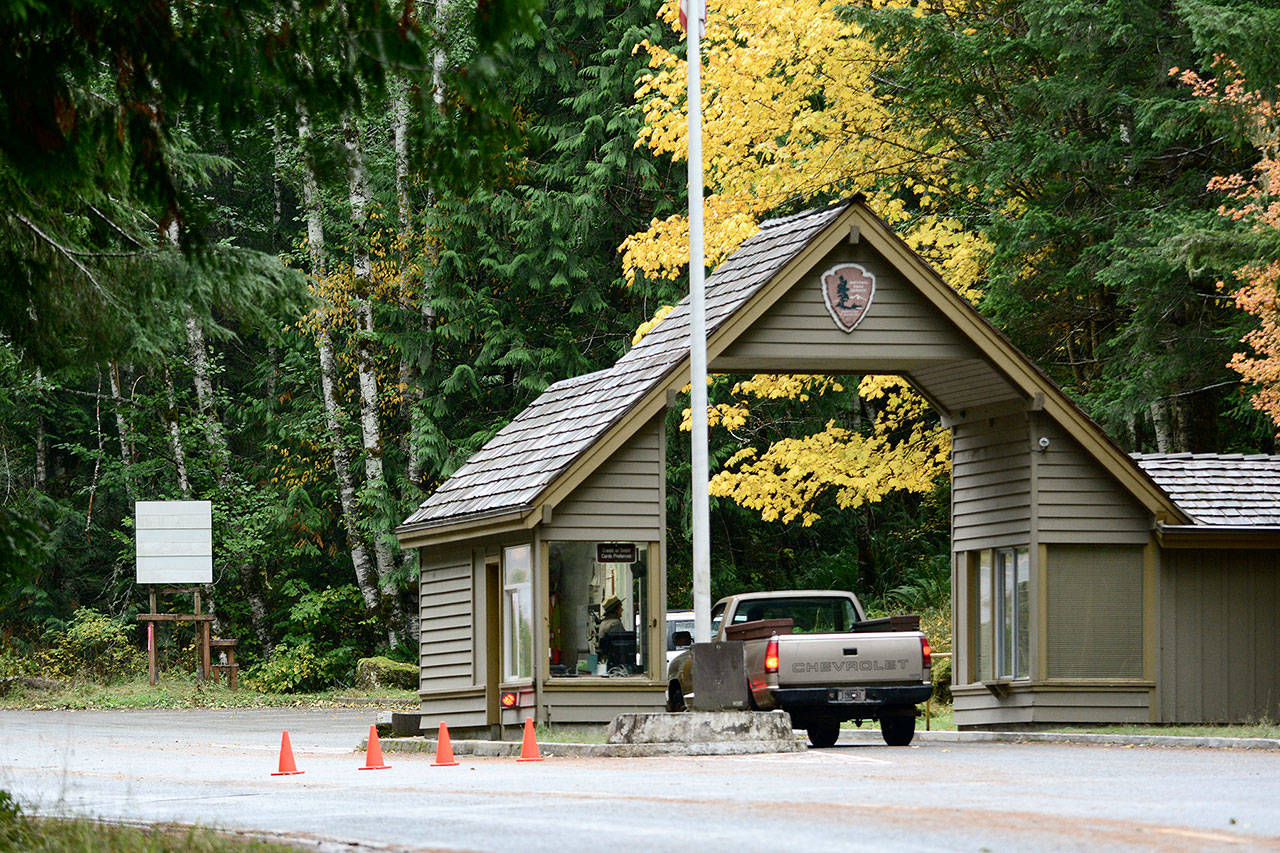OLYMPIC NATIONAL PARK — Could a single visit to the Elwha Valley, Hurricane Ridge or the Sol Duc Salmon Cascades cost $70?
That’s what the National Park Service is proposing.
Olympic National Park is among 17 national parks that could see entrance fee hikes, an effort NPS says would help address a maintenance backlog.
The fee increases for each park would be during the busiest five-month period of visitation. For ONP, that is May 1 through Sept. 30.
If the proposal moves forward, the entrance fee during peak season for weeklong passes would be $70 per private, noncommercial vehicle; $50 per motorcycle; and $30 per person on bike or foot. A park-specific annual pass for any of the 17 parks would be available for $75.
It currently costs $25 per vehicle and $50 for an annual pass. In 2014, it cost $15 per vehicle.
The new fees could be applied to ONP as soon as May 2018.
NPS is accepting public comment on the proposal through Nov. 23. The comment period opened Tuesday.
The public can comment online at parkplanning.nps.gov or by mailing written comments to National Park Service, Recreation Fee Program, 1849 C St. NW, Mail Stop: 2346 Washington, DC 20240.
The funds would be used to improve facilities, infrastructure and visitor services, with an emphasis on deferred maintenance projects, according to the NPS.
Tourism officials across the North Olympic Peninsula said they are sympathetic to the park’s need to fund maintenance, but some had concerns the fees could affect tourism and business across the Peninsula.
“It’s fair to say that for visitors who are coming from out of town, Olympic National Park is the single largest attraction for coming here,” said Marsha Massey, executive director of the Olympic Peninsula Visitor Bureau.
She fears that if implemented, the hike could have a “cooling effect” on tourism and adversely affect local businesses.
The park estimated last year that 3,390,221 people visited Olympic National Park and spent $286,786,300 in nearby communities.
That spending supported 3,842 jobs in the local area and had a cumulative benefit to the local economy of $398,689,900, according to the park.
Massey said she is urging people to provide constructive comments to the National Park Service.
“We all understand our national parks require ongoing investment and maintenance,” she said. “We have to take care of our parks. Coming up with viable solutions is more constructive.”
Lissy Andros, executive director of the Forks Chamber of Commerce, is concerned the hike could affect the number of people who visit the West End.
“If we get 40,000 people who sign our guestbook in a year, at least 70 percent are going to enjoy the park in some way,” she said. “There’s a lot of people who come here, and the one thing on their list is they have to go to the Hoh Rain Forest.”
She is urging people to comment on NPS’s proposal.
“The parks belong to the American people, and if they bring it to $70, that’s going to cut a lot of the public away from being able to afford to be in there,” she said.
Marc Abshire, executive director of the Port Angeles Regional Chamber of Commerce, said he doesn’t know how the price increases would affect tourism and said he isn’t aware of a study that shows the impact.
“There may not be much of an impact at all,” he said, adding that he wouldn’t expect a positive impact.
He said thousands of visitors stop by the visitor center each year on their way to the park and there’s “zero hesitation” when they hear about the $25 fee.
He doesn’t see the hike affecting locals because many get annual passes each year, he said.
In addition to Olympic, the proposed new fee structure would be implemented at Arches, Bryce Canyon, Canyonlands, Denali, Glacier, Grand Canyon, Grand Teton, Sequoia and Kings Canyon, Yellowstone, Yosemite and Zion national parks, with peak season starting May 1. In Acadia, Mount Rainier, Rocky Mountain and Shenandoah national parks, it would begin with peak season starting June 1, and in Joshua Tree National Park, it would begin as soon as practicable in 2018.
If implemented, estimates suggest that the peak-season price structure could increase national park revenue by $70 million per year, according to NPS.
That is a 34 percent increase over the $200 million collected in fiscal year 2016. Under the Federal Lands Recreation Enhancement Act, 80 percent of an entrance fee remains in the park where it is collected. The other 20 percent is spent on projects in other national parks.
________
Reporter Jesse Major can be reached at 360-452-2345, ext. 56250, or at jmajor@peninsuladailynews.com.

